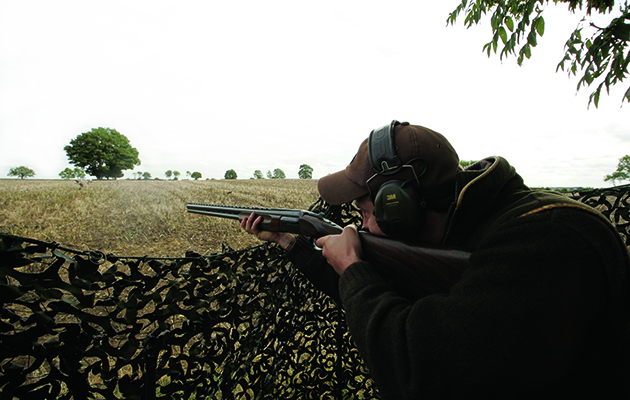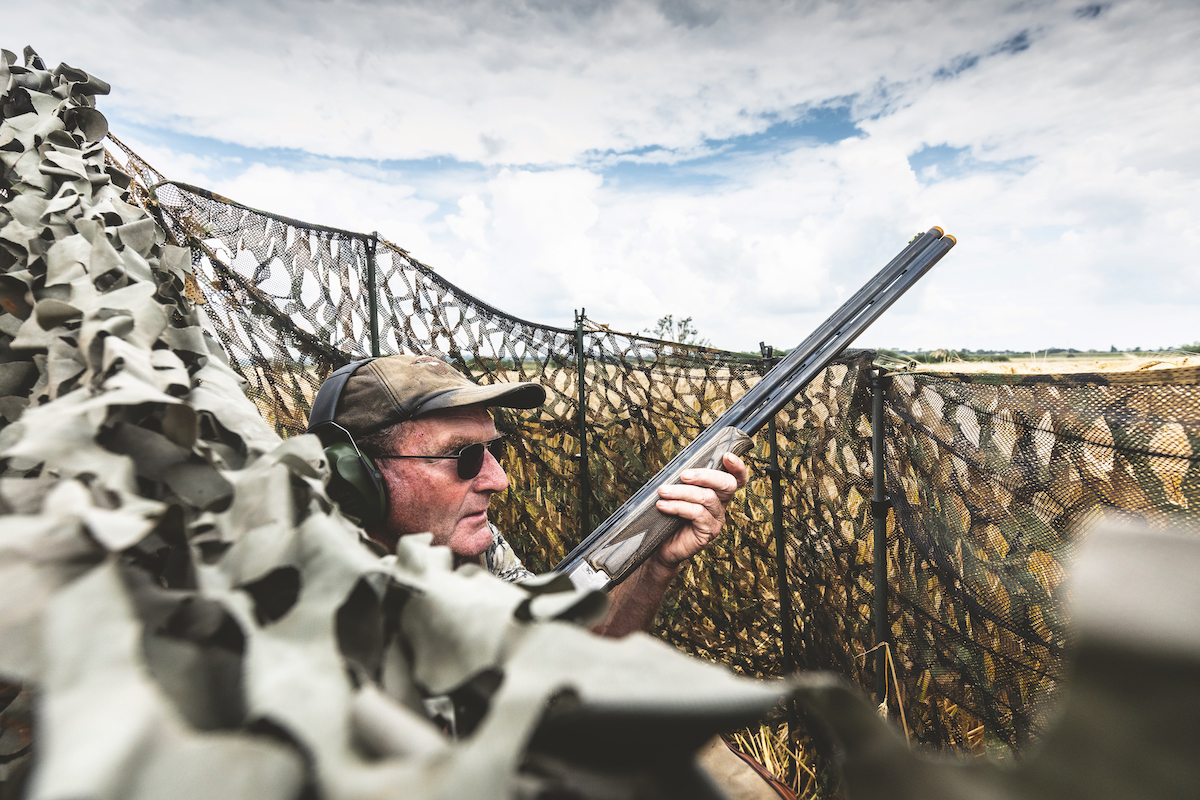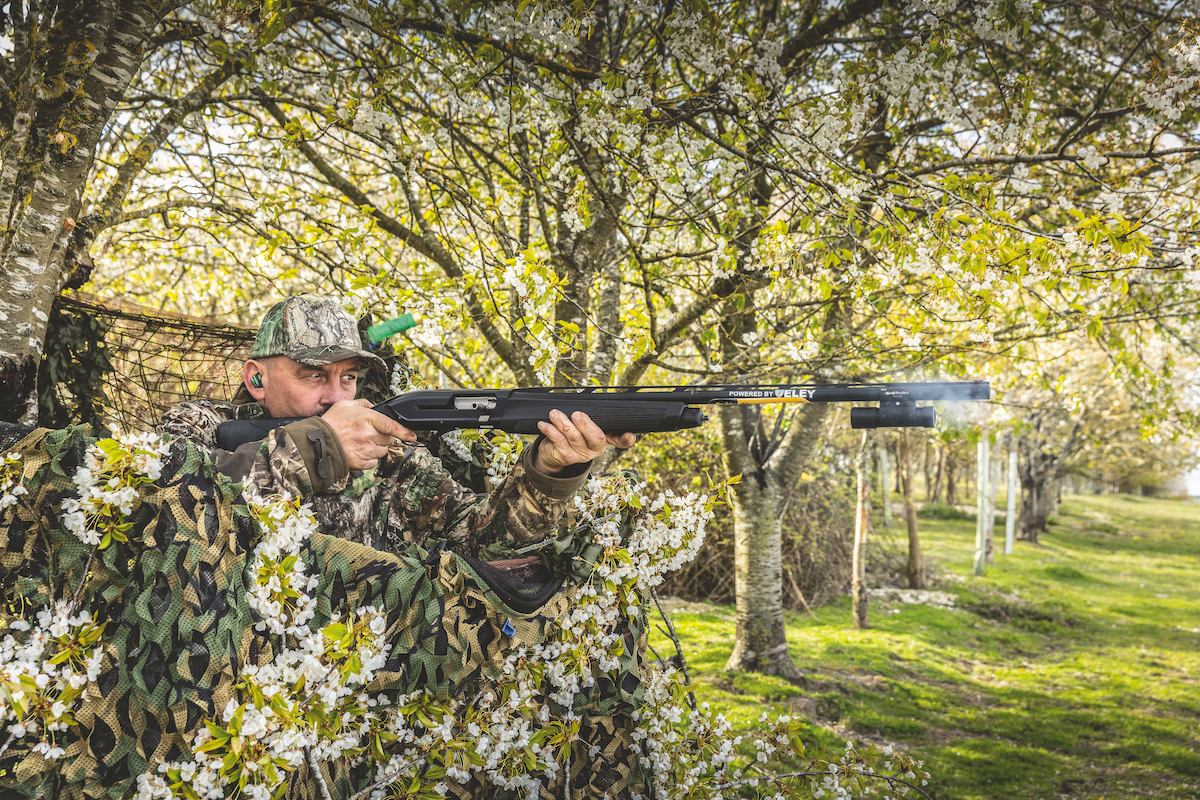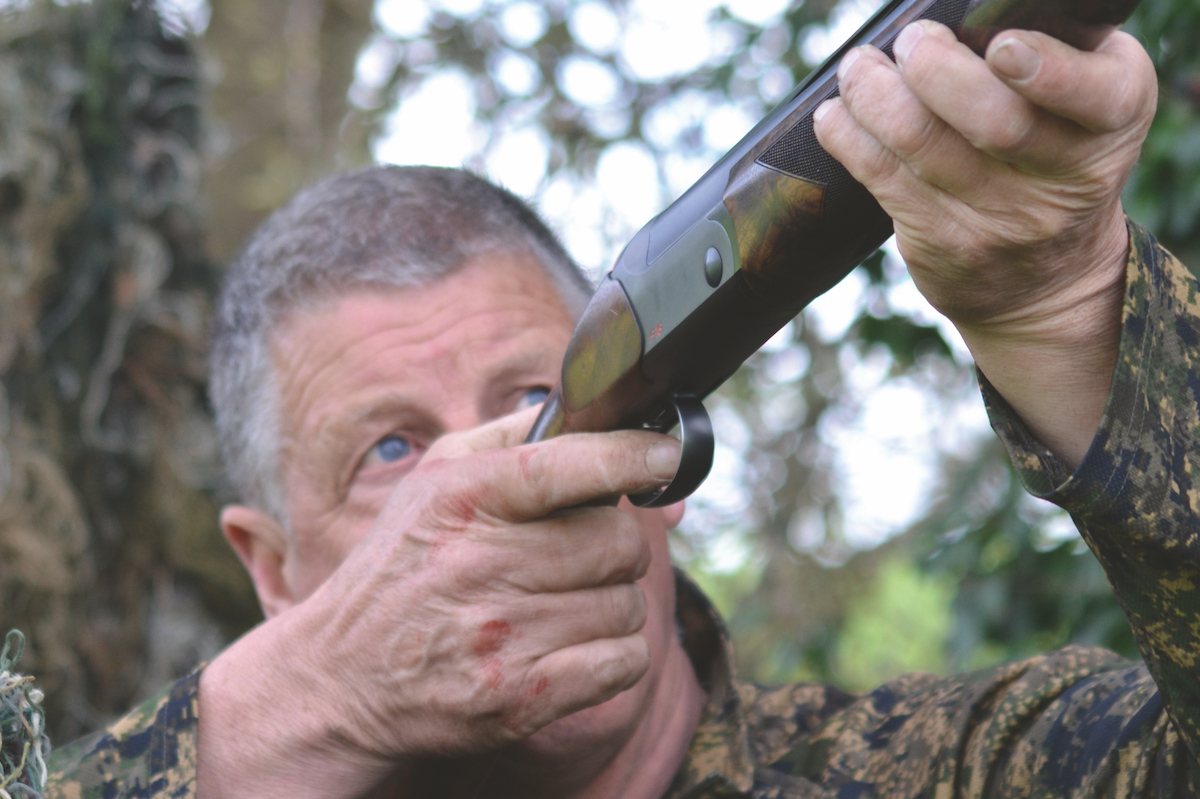Top tips for a successful pigeon shooting technique
Tom Payne shares his tips for the tweaks you can make to your pigeon shooting technique that will turn a good day into something special

I am so fortunate to be out and about shooting pigeon all the time. I’ve had the privilege to learn from some of the finest pigeon Shots over the years and have learned and modified some of their techniques to my advantage. I am a great believer in using traditional methods, making use of the limited but good modern equipment available when the situation calls for it. At the same time I continue to study the bird to develop and hone my decoying ability, ensuring that I continue to have consistent success.
Pigeon shooting is a sport that takes time to learn. Reconnaissance skills, fieldcraft, understanding the bird and decoying ability are key aspects of pigeon shooting that you need to master before you can place yourself in the perfect position to shoot a fine sporting bird and go home with a good bag. In my opinion, nowadays these core skills are all too often forgotten about, with too much of an emphasis placed on bag size. People crave that red-letter day, yet forget the work needed to achieve it.
Correct position
Without a doubt, being in the right position is the key to being able to decoy birds successfully. Being in the wrong position by 40 yards can completely change the way birds react to your decoys. Pigeon are very stubborn. They know where they want to go and where they want to feed, and if you are not in this spot you will have to work hard to get them to decoy with consistency, or even decoy at all.
Being in the right position comes down to reconnaissance and your ability to assess a possible shooting situation, evaluate what your options are and choose the right spot for the conditions.

Pigeon are stubborn and know where they want to feed so you must position yourself accordingly
Decoying
Once you have made the right decision about where to go, built the hide and set out your stall, next comes the placing of decoys. Much is said about how decoys should be arranged. There are plenty of suggested decoying patterns but I am sceptical about them. They are designed for varying weather conditions and to create killing zones, drawing birds within an effective killing range. Sometimes they can work, but patterns are not designed to represent feeding birds and if copied in a regimental manner will only put the birds off. I feel the emphasis is taken away from what the shooter sees with regards to his recon. I am yet to see birds feeding in a horseshoe shape, L-shape or V-shape, for example. Plenty of pigeon shooters do follow these patterns, but normally they have little success.
The way I decoy is to represent what I see during my recon. If birds are feeding in small groups spread apart, I will copy this when I put out my decoys. Birds feed differently on every crop. This is due to the amount and density of food available and the time of year.

Tom recommends decoying to reflect exactly what you have seen while doing your reconnaissance
Pigeon behaviour
Watching the behaviour of birds is so important, both during recon and during the day’s shooting. As a shooter, the more you can understand the bird, the easier it is to get to grips with decoying.
When it comes to choosing your hide position, there may be a particular sequence to arriving birds. For example, if the line arriving to the chosen field always heads to a small group of sitty trees before entering the field, don’t worry about where they are feeding. You need to encourage them off the trees, so get as close to the sitty trees as possible and decoy them before they sit up. If you choose to go to where they are feeding in the field, all that will happen is that the birds will sit up, assess a situation in which they possibly see danger and become difficult to decoy.
In so many situations I speak to pigeon shooters and they tell me that the birds were decoying well, but then stopped. If this is the case, don’t just sit there — try doing something new. There is no point sitting and watching birds almost commit, then turn away. Rearrange the picture and show the arriving birds something new. It may be something as simple as an upside-down decoy or a slight change in the wind that is causing the birds to become wary upon arrival.
There is an optimum number of decoys you can put out and, in some cases, reducing the number on certain crops can work well, as this will provide more landing areas. It all comes down to watching the behaviour of the arriving birds. At the same time, if all is working well, stick with it and try not to leave the hide too much, except for tidying up during the quiet periods.

Magnets can be effective, but pigeon may flare from one at the last moment if it is too close to your hide
Movement
Movement is important, but bear in mind that you can have too much.
Magnets can work well, but they need to be used correctly. Ideally, they should be placed upwind. I usually try to place them between 10 yards and 20 yards from where I want to shoot arriving birds. They should be used as an attractor but should not draw the attention from your main decoys. Placing one too close to the hide can make shooting tricky, since it causes birds to flare at the last moment.
When using a magnet, make sure that it is moving at speed. If it is too slow arriving, birds will work out that there is an alien object among their friends.
Flappers are great and you can use a few at a time. I would always favour a flapper over a magnet as I prefer the natural movement.
Have the confidence to create natural movement in your decoys by using cradles, for example, or canes. Breaking the wings of dead birds and leaving them hanging, for example, can create subtle movement in a light breeze or wind, but don’t do this with every bird.
Floaters can work well. I tend to place them about 80 yards from the decoys on the line, simply as a visual aid at distance. You are hoping for the arrivals to overfly and head to the decoys, but be careful in certain situations as sometimes it can turn them away too.
Bear in mind the rule that with all mechanical contraptions, if they are not working, stop using them.

Placing dead birds – in good condition – in cradles will help to create natural movement in your pattern
Dead bird decoys
In 90 per cent of all my decoying, I will only use dead birds. They are the “real thing” after all, and I have yet to see anything perform as well as one of these. This is not to say there are not some good alternatives, but dead birds are my chosen decoy.
If you are going to use dead pigeon, only use those that are in perfect condition. Their feathers must be in perfect order and they must have a well-pronounced neck and good wing bars.
Dead birds in poor condition won’t perform well and you may as well use a plastic alternative. So, at the end of a day’s shooting, carefully pick out your good dead pigeon for the next outing.

Tom prepares a floater to add to the pattern
Tom’s top tips for successful pigeon shooting technique
- It is so important to get yourself in the correct position. You may only be a few yards out, but it could seriously affect the way the birds decoy.
- Don’t rely too much on patterns, they don’t represent feeding birds. Pay attention during your recon and represent what you have watched in your decoying. Remember you are trying to fool a wild bird.
- Understanding the behaviour of pigeon over certain crops will help you decoy the birds successfully and shoot them consistently. Stay vigilant with your recon and pay careful attention to the crop, timings, weather and bird behaviour.
- Movement in your decoys is important, but don’t get hung up on it. You can create natural movement using dead birds and cradles or canes by breaking wings. And if a mechanical decoy isn’t working, try something else.
- If you decide to use dead pigeon as decoys, make sure you only select birds that are in pristine condition, with perfect feathers, good wing bars and a well-pronounced neck.








